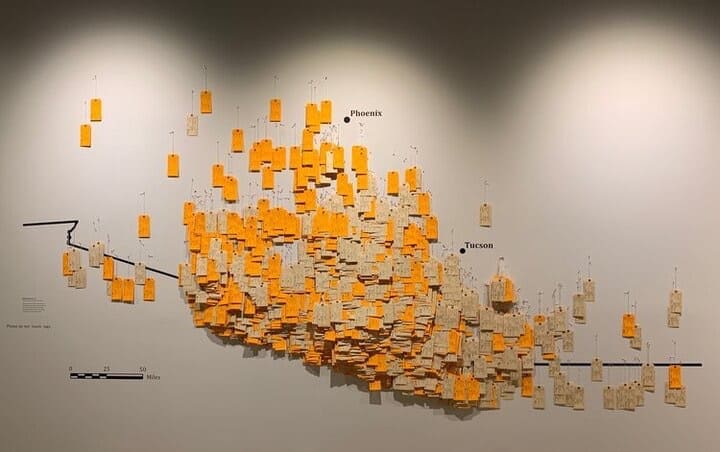‘Border South’ documentary highlights migrant stories
October 11, 2020
In a year, over 400,000 migrants travel from the south of Mexico. Thousands go missing.
Those were the opening lines displayed to faculty, staff, and students who attended a watch party event for the award-winning documentary “Border South” last month. This was the highlight of a two-day series organized by The University of Alabama’s division of Diversity, Equity and Inclusion to recognize National Hispanic Heritage Month, which runs through Oct. 15.
The documentary was divided into three main parts: “The Survivor,” “The Anthropologist” and “The Trail.”
“The Survivor” follows the story of a Nicaraguan man named Gustavo who was shot by Mexican border police and who witnessed the death of his friend at their hands during his travels. The story of his survival spread throughout Mexico, and his case against the government may allow him to obtain Mexican citizenship.
“The Anthropologist” tracks the film’s producer Jason De León as he collects items from the harsh deserts of Arizona that were left behind by migrants on their journey across the U.S.-Mexican border. The items he finds connect the stories of the hundreds of immigrants who have been lost on the trail.
“The Trail” features conversations with Central Americans in a number of locations including migrant camps, forests and by train tracks as they discuss topics related to immigration. The filmmakers were able to showcase both the grave uncertainty and humor found in their journeys over several months.
The discussions that followed after the movie’s viewing were led and moderated by Spanish professor Sarah Moody, history professor Teresa Cribelli and geography professor Jared Margulies.
Margulies took time at the beginning of the discussion to explain how an upcoming exhibition, “Hostile Terrain 94” connects with “Border South.” The two works are often paired together since the documentary’s producer is also the creator of the exhibition.
“Hostile Terrain 94” is a research exhibition composed of over 3,000 handwritten toe tags. Each tag features the migrant’s name if their remains could be identified. The tags hang on a wall map of the Sonoran Desert of Arizona to show the exact locations where their remains were found between the mid-1990s and 2019.
The installation has taken place at multiple national and global universities. At the University, “Hostile Terrain 94” was scheduled to be exhibited this fall, but it has been moved to next fall due to COVID-19. During the exhibition, each tag will be filled out by volunteers from the UA community. Margulies invited students who were interested in the project in 2021 to contact him via his email at jdmargulies@ua.edu.
The two-day event continued until Sept. 25 as participants were encouraged to join a question and answer forum with Raúl Raz Pastrana, the director of “Border South” and De León, the creator and producer of HT94. The Q&A can still be viewed on the “Hostile Terrain” Facebook page.





















